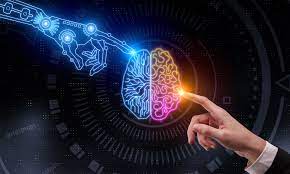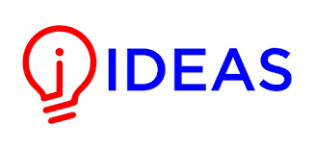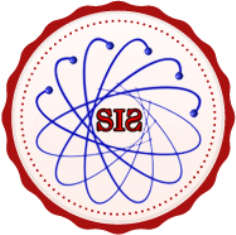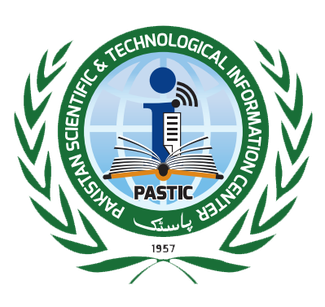Applications of Artificial Intelligence in Various Traits of Life
Keywords:
AI, Knowledge, SharingAbstract
Knowledge Administration (KA) is the method by which an organization creates, shares, applies, and manages its information and knowledge. Although conventional KA has evolved throughout the years, documentation remains its bedrock principle. The considerable shift towards remote and hybrid working, however, has shown the limitations of conventional practices. Artificial intelligence (AI) will close these knowledge gaps and alter the ways in which KA is converted and knowledge is managed. This article reviews research on artificial intelligence (AI) and Knowledge Administration (KA), focusing on how AI can help to improve their KA strategies. In light of the existing literature critical review analyses the most up-to-date methods by analyzing both theoretical and applied works. In addition, the analytical framework presented below is useful for imagining new lines of inquiry and ways to enhance the quality of existing ones.
References
Y. A. Joo, Y. K. Kim, T. S. Yoon, and K. A. Lee, “Microstructure and High Temperature Oxidation Property of Fe–Cr–B Based Metal/Ceramic Composite Manufactured by Powder Injection Molding Process,” Met. Mater. Int., vol. 24, no. 2, pp. 371–379, 2018, doi: 10.1007/s12540-018-0053-3.
J. Klinger, J. C. Mateos-Garcia, and K. Stathoulopoulos, “Deep Learning, Deep Change? Mapping the Development of the Artificial Intelligence General Purpose Technology,” SSRN Electron. J., 2018, doi: 10.2139/ssrn.3233463.
R. Vosooghi, J. Puchinger, J. Bischoff, M. Jankovic, and A. Vouillon, “Shared autonomous electric vehicle service performance: Assessing the impact of charging infrastructure,” Transp. Res. Part D Transp. Environ., vol. 81, pp. 1–26, 2020, doi: 10.1016/j.trd.2020.102283.
L. Chen et al., “An artificial intelligence based data-driven approach for design ideation,” J. Vis. Commun. Image Represent., vol. 61, pp. 10–22, 2019, doi: 10.1016/j.jvcir.2019.02.009.
S. Ramakrishna, T. C. Khong, and T. K. Leong, “Smart Manufacturing,” Procedia Manuf., vol. 12, pp. 128–131, 2017, doi: 10.1016/j.promfg.2017.08.017.
C. J. Cai, J. Jongejan, and J. Holbrook, “The effects of example-based explanations in a machine learning interface,” Int. Conf. Intell. User Interfaces, Proc. IUI, vol. Part F147615, pp. 258–262, 2019, doi: 10.1145/3301275.3302289.
F. Ali et al., “An intelligent healthcare monitoring framework using wearable sensors and social networking data,” Futur. Gener. Comput. Syst., vol. 114, pp. 23–43, 2020, doi: 10.1016/j.future.2020.07.047.
B. L. Risteska Stojkoska and K. V. Trivodaliev, “A review of Internet of Things for smart home: Challenges and solutions,” J. Clean. Prod., vol. 140, pp. 1454–1464, 2017, doi: 10.1016/j.jclepro.2016.10.006.
T. Mucha and T. Seppala, “AI Diffusion Monitoring among S & P500 Companies : Empirical Results and Methodological Advancements Association for Information Systems AI Diffusion Monitoring among S & P500 Companies : Empirical Results and Methodological Advancements Tomasz Mucha,” no. February 2023, 2022.
M. J. Feigenbaum and N. D. Mermin, E = m c 2 , vol. 56, no. 1. 1988. doi: 10.1119/1.15422.
Y. Duan, J. S. Edwards, and Y. K. Dwivedi, “Artificial intelligence for decision making in the era of Big Data – evolution, challenges and research agenda,” Int. J. Inf. Manage., vol. 48, pp. 63–71, 2019, doi: 10.1016/j.ijinfomgt.2019.01.021.
A. Yadav, V. Gupta, H. Sahu, and S. Shrimal, “Artificial Intelligence - New Era,” Int. J. New Technol. Res., vol. 3, no. 3, p. 263339, 2017.
K. Cresswell, M. Callaghan, S. Khan, Z. Sheikh, H. Mozaffar, and A. Sheikh, “Investigating the use of data-driven artificial intelligence in computerised decision support systems for health and social care: A systematic review,” Health Informatics J., vol. 26, no. 3, pp. 2138–2147, 2020, doi: 10.1177/1460458219900452.
P. Mirowski, “Markets come to bits: Evolution, computation and markomata in economic science,” J. Econ. Behav. Organ., vol. 63, no. 2, pp. 209–242, 2007, doi: 10.1016/j.jebo.2005.03.015.
EPTA, “The Future of Labour in the Digital Era Ubiquitous Computing, Virtual Platforms, and Real-time Production,” p. 107, 2016.
M. Garbuio and N. Lin, “Artificial intelligence as a growth engine for health care startups: Emerging business models,” Calif. Manage. Rev., vol. 61, no. 2, pp. 59–83, 2019, doi: 10.1177/0008125618811931.
Y. Feng, Y. Zhao, H. Zheng, Z. Li, and J. Tan, “Data-driven product design toward intelligent manufacturing: A review,” Int. J. Adv. Robot. Syst., vol. 17, no. 2, pp. 1–18, 2020, doi: 10.1177/1729881420911257.
A. Bahrammirzaee, “A comparative survey of artificial intelligence applications in finance: Artificial neural networks, expert system and hybrid intelligent systems,” Neural Comput. Appl., vol. 19, no. 8, pp. 1165–1195, 2010, doi: 10.1007/s00521-010-0362-z.
H. Güngör, “Creating Value with Artificial Intelligence: A Multi-stakeholder Perspective,” J. Creat. Value, vol. 6, no. 1, pp. 72–85, 2020, doi: 10.1177/2394964320921071.
A. Géron, “Hands-on machine learning with Scikit-Learn and TensorFlow : concepts, tools, and techniques to build intelligent systems,” O’Reilly Media, p. ```, 2017.
X. Zhou, W. Liang, K. I. K. Wang, H. Wang, L. T. Yang, and Q. Jin, “Deep-Learning-Enhanced Human Activity Recognition for Internet of Healthcare Things,” IEEE Internet Things J., vol. 7, no. 7, pp. 6429–6438, 2020, doi: 10.1109/JIOT.2020.2985082.
K. Bansak et al., “Algorithmic Assignment,” Science (80-. )., vol. 359, no. 6373, pp. 325–329, 2018.
G. A. Pratt, “Is a Cambrian Explosion coming for robotics?,” J. Econ. Perspect., vol. 29, no. 3, pp. 51–60, 2015, doi: 10.1257/jep.29.3.51.
A. E. Education, T. Mucha, and J. Mattila, BRIE-ETLA Collection of Articles, no. April. 2023.
A. Kaplan and M. Haenlein, “Rulers of the world, unite! The challenges and opportunities of artificial intelligence,” Bus. Horiz., vol. 63, no. 1, pp. 37–50, 2020, doi: 10.1016/j.bushor.2019.09.003.
M. Palmié, J. Wincent, V. Parida, and U. Caglar, “The evolution of the financial technology ecosystem: An introduction and agenda for future research on disruptive innovations in ecosystems,” Technol. Forecast. Soc. Change, vol. 151, 2020, doi: 10.1016/j.techfore.2019.119779.
C. Prunkl, “Human autonomy in the age of artificial intelligence,” Nat. Mach. Intell., vol. 4, no. 2, pp. 99–101, 2022, doi: 10.1038/s42256-022-00449-9.
A. F. T. Winfield and M. Jirotka, “Ethical governance is essential to building trust in robotics and artificial intelligence systems,” Philos. Trans. R. Soc. A Math. Phys. Eng. Sci., vol. 376, no. 2133, 2018, doi: 10.1098/rsta.2018.0085.
I. Roll and R. Wylie, “Evolution and Revolution in Artificial Intelligence in Education,” Int. J. Artif. Intell. Educ., vol. 26, no. 2, pp. 582–599, 2016, doi: 10.1007/s40593-016-0110-3.
M. Perc, M. Ozer, and J. Hojnik, “Social and juristic challenges of artificial intelligence,” Palgrave Commun., vol. 5, no. 1, pp. 1–7, 2019, doi: 10.1057/s41599-019-0278-x.
G. Karimian, E. Petelos, and S. M. A. A. Evers, “The ethical issues of the application of artificial intelligence in healthcare: a systematic scoping review,” AI Ethics, vol. 2, no. 4, pp. 539–551, 2022, doi: 10.1007/s43681-021-00131-7.
V. Devedzic, “Identity of AI,” Discov. Artif. Intell., vol. 2, no. 1, 2022, doi: 10.1007/s44163-022-00038-0.
A. Grunwald, “The inherently democratic nature of technology assessment,” Sci. Public Policy, vol. 46, no. 5, pp. 702–709, 2019, doi: 10.1093/scipol/scz023.
T. B. Sheridan, “Human-Robot Interaction,” Hum. Factors, vol. 58, no. 4, pp. 525–532, 2016, doi: 10.1177/0018720816644364.
E. Kassens-Noor et al., “Sociomobility of the 21st century: Autonomous vehicles, planning, and the future city,” Transp. Policy, vol. 99, no. August, pp. 329–335, 2020, doi: 10.1016/j.tranpol.2020.08.022.

Downloads
Published
How to Cite
Issue
Section
License
Copyright (c) 2023 International Journal of Innovations in Science & Technology

This work is licensed under a Creative Commons Attribution 4.0 International License.




















